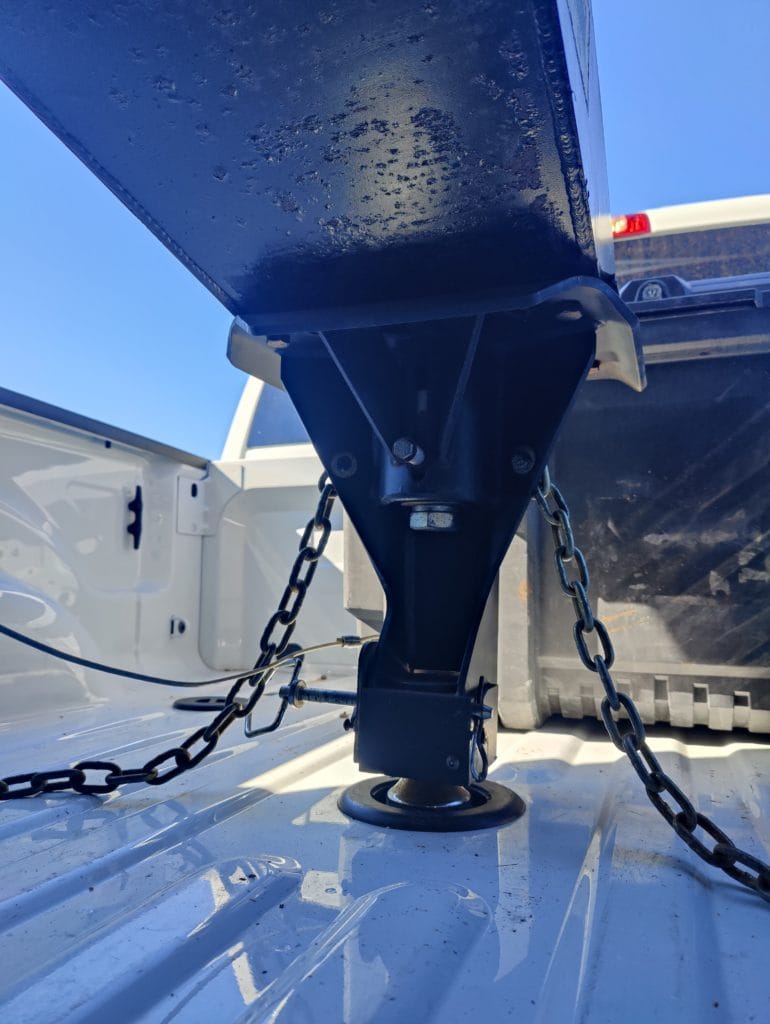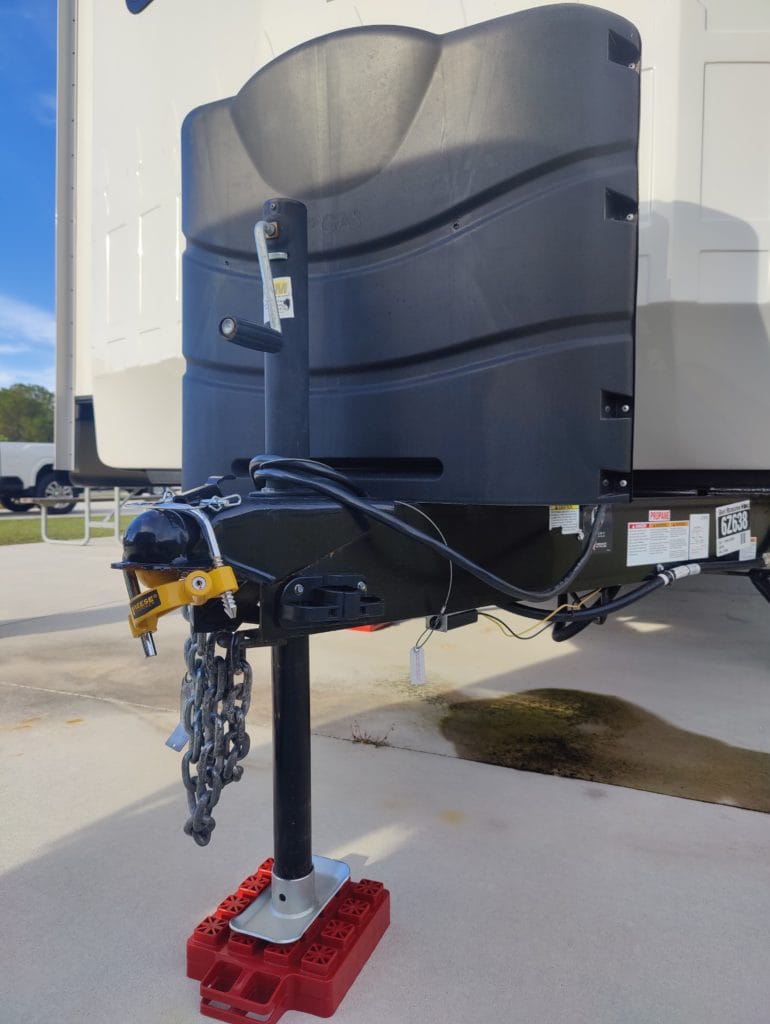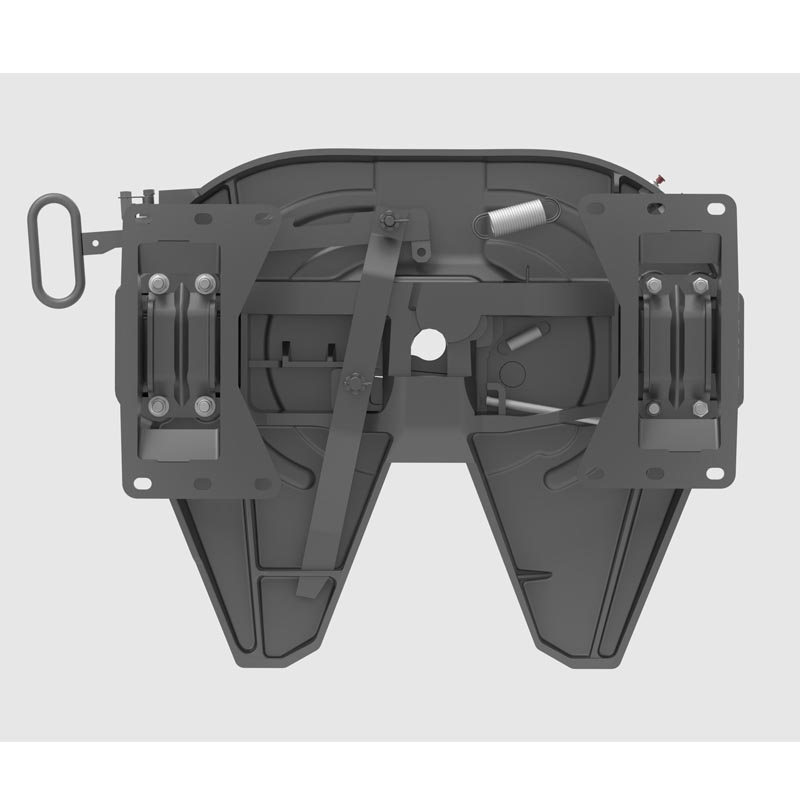Apr. 24, 2024 11:22 Balik deui ka daptar
Pituduh anjeun TOWING AN RV kalima kabayang coupler
According to a report by the RV Industry Association, more than 11 million households in the United States now own an RV. And if you are interested in joining the ranks of RV owners—especially if you’re looking to buy a travel trailer or roda kalima—it’s important to know exactly what towing an RV will entail.
Here we’ve put together a helpful guide that aims to answer all of your towing questions. This covers everything from choosing the right tow vehicle to understanding towing capacity to knowing the different hitches. Our goal is not only to educate but to help you feel confident and comfortable when pulling an RV behind you.
kualitas luhur JSK casting kalima kabayang 37C
MILIH KENDARAAN TÉKÉK
We highly recommend choosing your RV before buying your tow vehicle. This way you’ll know exactly how much your RV weighs before you figure out how much weight your tow vehicle will need to pull. When figuring out how much your RV weighs, be sure to ask your dealer about both the dry hitch weight (how much the RV weighs when it is empty) and the cargo carrying capacity (the maximum amount of weight you can add to your RV). On average, your RV will weigh 1,500 pounds more once it’s been filled with water, gas and gear.
Once you know your RV’s total weight, then you can look to find a tow vehicle that matches it. If possible, opt to have a tow package added to your RV so you can maximize your towing capacity. If you already have a vehicle that you plan to use to tow your RV, make sure you buy an RV that doesn’t exceed the weight limit that your current vehicle can pull. This is where you’ll need to understand your vehicle’s towing capacity.
KAPASITAS TOWING
Towing capacity is the maximum amount of weight your vehicle can tow when pulling your RV. This number lets you know exactly how heavy your trailer can be. If you don’t know your towing capacity and try to pull a trailer that is too heavy, you could end up in a very dangerous situation so it’s vital to know your tow vehicle’s limits.
To determine maximum towing capacity, you’ll need to find out the vehicle manufacturer's weight ratings and compare them to the weight of your RV. You can usually find your vehicle’s weight rating on the inside of the driver door or in the owner’s manual. If the vehicle's ratings are higher than the total weight of the RV, then the RV is safe to tow.
Another good number to know is the Gross Combined Weight Rating (GCWR). This number is established by the vehicle’s manufacturer and represents the maximum weight the vehicle can handle with an RV attached. The GCWR takes into consideration the weight of the vehicle’s axles, wheels, suspension system, and frame, as well as the weight of the RV. You can also find the GCWR in your owner’s manual, or you can call your dealer or vehicle manufacturer and give them your VIN number and they should be able to tell you the specific GCWR.
HITCHES
In addition to towing capacity, you’ll also need to understand the different types of RV hitches. Whatever hitch you choose is heavily dependent on the type of RV you purchase, so we’ve listed three basic hitch types and their corresponding RV types here.
HITCH RODA KALIMA:
This hitch is specifically used for towing fifth wheels. It is installed inside the bed of a truck and sits above the bed of the trailer. The trailer then attaches to the truck with a kingpin mechanism. These hitches are able to handle a lot of weight (anywhere from 16,000 to 30,000 pounds) due to the fact that the fifth wheel’s weight is pressing down directly over the rear axle of the truck.
GOOSENECK HITCH:
Ieu pilihan ngeunyeud sejen pikeun roda kalima tapi tinimbang ngagunakeun kingpin a, sistem ngeunyeud ieu ngagunakeun bal na coupler. Sababaraha urang resep hitches gooseneck sabab nyokot up kirang spasi dina ranjang tina treuk a jeung maranéhna bisa narik leuwih beurat ti ngeunyeud roda kalima (30.000 pon). Gooseneck hitches anu hadé pikeun roda kalima heavier, kawas haulers kaulinan badag.

A nutup-up tina hiji ngeunyeud gooseneck, nu utilizes bola jeung mékanisme coupler, hooked up dina ranjang tina treuk a.
DISTRIBUSI BEBATAN HITCH:
Sistem hitch ieu paling sering dianggo pikeun gandeng perjalanan anu langkung beurat (dugi ka 15,000 pon) sareng ngamungkinkeun anjeun ngerek kapasitas maksimal. Beda sareng halangan bemper standar dimana sadaya beurat trailer linggih dina tonggong kendaraan anu ngerek, hitch distribusi beurat nyebarkeun beurat létah ka sadaya as. Anjeun oge bisa make hitch ieu kalawan Unit kontrol sway pikeun mantuan ngurangan sway bari nyetir.
STANDAR BUMPER HITCH:
Disebut oge hitch mawa beurat atawa henteu beurat, sistem hitch ieu utamana dipaké pikeun gandeng perjalanan leutik (3.500 pon). Sapertos gooseneck hitch, sistem ieu ogé nganggo bal sareng coupler, kalayan beurat trailer langsung dina bemper kendaraan tarik anjeun. Aya dua gaya dasar hitches bemper baku: a drawbar dibereskeun, dimana platform bal ieu permanén dibereskeun ka ngeunyeud nu; jeung a drawbar removable, dimana platform bal bisa dicokot sareng mareuman.

A hitch trailer perjalanan, ilahar disebut bemper standar, nu geus dipegatkeun tina kandaraan ngerek tur dipasangan blok leveling.
Dasar nyetir bari towing RV Anjeun
Ayeuna anjeun gaduh pamahaman anu langkung saé ngeunaan kumaha nyambungkeun sareng ngatur beurat, ieu sababaraha tip gancang pikeun nyetir RV towable anjeun.
When towing an RV, keep in mind that you have a lot of extra weight and it’s much harder to slow down. Plus, half the joy of RVing is in the journey so enjoy the drive and focus on getting to your destination safely rather than quickly.
Make sure you maintain some extra distance between you and the car in front of you. It’s much harder to stop quickly with all of the extra weight behind you.
Konci pikeun péngkolan kalayan trailer nyaéta nyandak éta laun sareng lega. Anjeun kudu ninggalkeun cukup kamar pikeun RV anjeun nuturkeun balik tanpa pencét curb nu. Sareng émut yén langkung panjang trailerna, langkung ageung anjeun kedah nyandak péngkolan.
A good tip for reversing is to put your hand at the bottom of your steering wheel—this way your RV will move in the same direction as your hand. If you move your hand to the left, the rear end of the trailer will go left. If you move your hand to the right, the rear end will go right. Take your time and don’t exaggerate any of your turning motions. Quick turns while reversing can cause your travel trailer to jackknife and damage both your RV and your tow vehicle.
When reversing with a fifth wheel, use the same steering wheel tip as a travel trailer—place a hand at the bottom of the steering wheel and move the steering wheel in the direction that you want the fifth wheel to turn. If you’re backing into a spot, try to angle the fifth wheel away from the driver’s side to keep your visibility clear. We also highly recommend using a spotter any time you reverse a fifth wheel. Have a pair of walkie talkies handy so the spotter can clearly communicate with the driver and help direct. A back-up camera is also helpful and can easily be installed if your fifth wheel doesn’t already have one.
Patarosan nanya ka dealer RV Anjeun
- If you already have a tow vehicle, your first question for the dealer should be if your vehicle can actually handle the RV you are considering. Be clear about your tow vehicle's weight ratings and GCWR. Ideally, your dealer should show you different RV models that will put you below your vehicle’s towing capacity to give you some extra flexibility and assurance.
- Kadua, pariksa tur tingal lamun dealer anjeun nyadiakeun sagala pakét ngeunyeud tambahan atawa husus. Upami aranjeunna ngalakukeun, tanyakeun upami aya biaya pamasangan sareng sabaraha lami pamasanganna.
- Salajengna, nanya lamun dealer anjeun bakal daék nyambungkeun RV ka wahana ngerek Anjeun. Ku cara ieu anjeun tiasa diajar kumaha ngalakukeunana nyalira sareng anjeun tiasa mastikeun yén sinyal péngkolan sareng lampu rem anjeun dipasangkeun leres sareng RV.
- Sareng anu terakhir, naroskeun ka dealer anjeun pikeun nunjukkeun anjeun dimana aya stiker inpormasi beurat trailer. stiker ieu kudu boga tilu angka na: Kasar Vehicle Beurat Peunteun (GVWR), nu beurat maksimum RV Anjeun tiasa nalika pinuh dimuat; Unloaded Vehicle Weight (UVW), nyaéta beurat RV langsung ti produsén; sarta Gross Axle Weight Rating (GAWR), nyaéta beurat maksimum anu tiasa ditempatkeun dina as kendaraan.
Harepan kami yén pituduh ieu bakal ngabantosan anjeun ngarasa yakin ngeunaan ngerek RV. Upami anjeun angkatan sareng inpormasi anu leres sareng terang naon anu kedah ditaroskeun, milarian trailer anu sampurna langkung gampang tibatan anu anjeun pikirkeun. Sagedengeun ti eta, aya sabenerna nanaon hadé ti bisa mawa imah anjeun sapanjang keur numpak.
-
Unveiling the Essential Components and Maintenance of Trailer Equipment
WartaJun.12,2025
-
Unveiling the Critical Role and Features of Jost Landing Gear and Coupling Systems
WartaJun.12,2025
-
Unveiling the Core Solutions in Commercial Vehicle and Industrial Equipment by Jost
WartaJun.12,2025
-
Unveiling the Core Elements of Fifth Wheel Technology
WartaJun.12,2025
-
Unveiling the Core Components and Solutions of Jost in the Heavy - Haul Industry
WartaJun.12,2025
-
The Indispensable Role of Jost Fifth Wheel Solutions
WartaJun.12,2025

